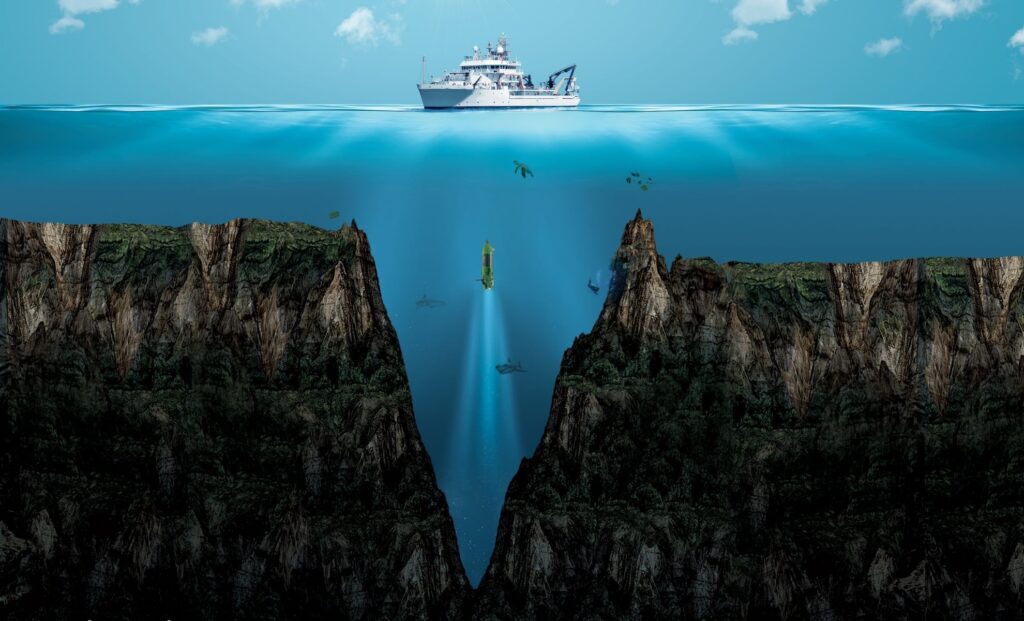The study, led by scientists from the University of Bremen and the Woods Hole Oceanographic Institution, found that microbial life is not just clinging on but actively metabolizing under extreme conditions. This breakthrough was made not through DNA analysis, but by detecting lipid biomarkers—chemical traces that reveal microbial activity in environments too hostile for conventional methods.
Until now, life in the Mariana forearc had only been speculated. The region lacks the heat of hydrothermal vents and presents one of the most inhospitable chemical profiles on Earth. But by analyzing fats preserved in sediment, researchers were able to prove that extremophiles have adapted to thrive there, offering a new perspective on deep-sea ecosystems.

An Invisible Biosphere Beneath the Ocean Floor
The Mariana forearc sits between the volcanic arc and the trench itself, far below the ocean’s surface. It’s an area where mud volcanoes erupt cold, mineral-rich material, and where geochemical processes like serpentinization transform rock into energy-rich minerals. Despite this, the region had remained biologically unconfirmed—mainly because the few cells that might exist there fall below the threshold detectable by standard DNA-based techniques.
According to Florence Schubotz, organic geochemist at the University of Bremen, the team had long suspected life might be present, but lacked physical proof. “Until now, the presence of methane-producing microorganisms in this system has been presumed,” she stated. Lipid molecules provided that proof. The researchers traced them from pelagic sediment into the deeper serpentinite mud, showing a shift in microbial communities tuned to the extreme chemistry of the environment.


Extracting Energy Directly From Rock
Unlike lifeforms that feed off nutrients in seawater or heat from hydrothermal vents, these microbes appear to derive their energy from the rocks themselves. During serpentinization, rocks rich in iron and other elements react with seawater, producing gases like hydrogen and methane. Instead of waiting for these gases to be released, the microbes seem to access the raw material directly, metabolizing trapped elements inside the rock.
First author Palash Kumawat, a PhD candidate in Bremen’s Geosciences Department, compared the method to checking household trash to confirm if a home is occupied. The presence of fat residues left behind by microbial membranes revealed not only that the organisms were there, but that they had been there long enough to build stable communities. As reported by IFLScience, “multiple microbial communities are thriving there, and have for a long time.”


Signs of an Ancient Survival Strategy
The discovery also raises the possibility that such environments could have supported early life on Earth. The ability of these microbes to survive without sunlight, warmth, or high organic carbon concentrations mirrors what scientists believe conditions may have been like on the early planet.
According to Schubotz, “it is simply exciting to obtain insights into such a microbial habitat.” She and her colleagues believe this kind of ecosystem may not just be a modern anomaly, but a glimpse into Earth’s biological past. If life could start in such a place, it might explain how biological systems took root in Earth’s earliest and most volatile stages.

